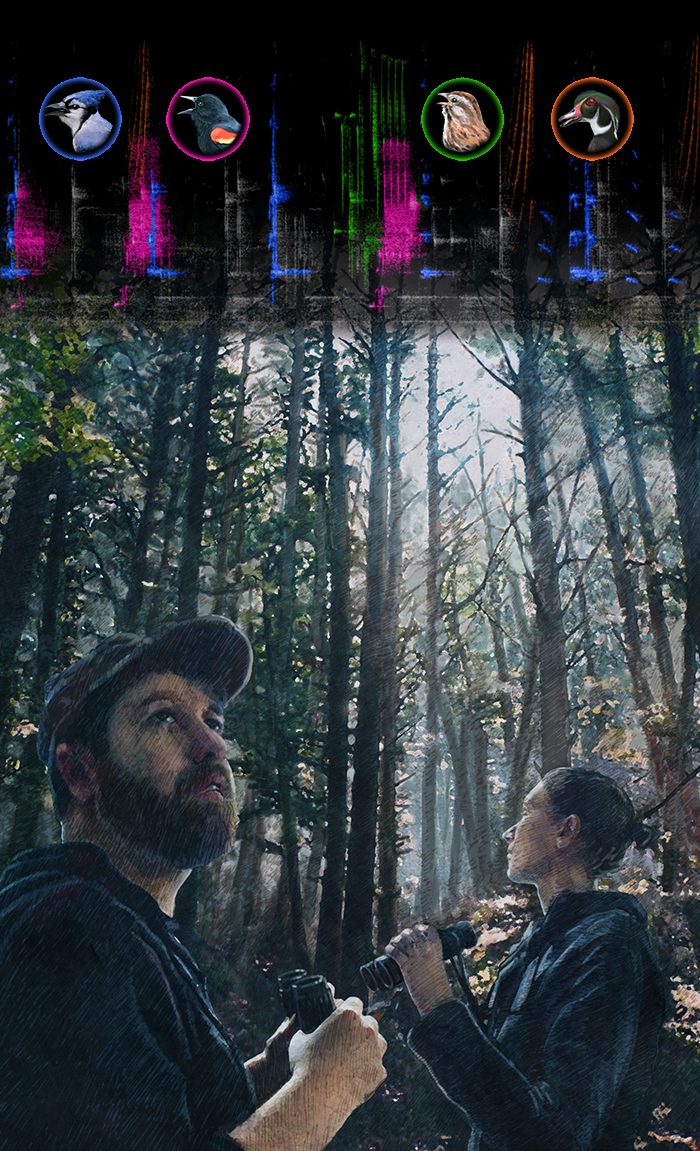What Does A Dawn Chorus of Bird Song “Look” Like?
By Gustave Axelson
June 11, 2018
From the Summer 2018 issue of Living Bird magazine. Subscribe now.
The woods in early summer can be a noisy place. It’s breeding season for many birds, and more than a dozen species may be singing at full volume, staking out their territories and communicating to potential mates via distinctive songs.
Summer birdsong concerts can sound like a beautiful cacophony, a jumble of tweets and twitters and trills and whistles. But to the trained ear, all that bird song is like a symphony orchestra. And if you can recognize the sound of each instrument, you’ll know which birds are making the music.
“The birds are always telling us who they are and what they are doing,” says Nathan Pieplow, author of the Peterson Field Guide to Bird Songs of Eastern North America. “The problem is, we don’t all speak bird.”
The best way to learn the identities of birds singing in an area, say Pieplow and many other bird-song experts, is to visualize them. Learn your local bird songs and track their pitches and rhythms by looking at their spectrograms. Then, when you encounter those voices in a soundscape—the audio component of a landscape—you’ll be better equipped to isolate the sound, recognize the pattern, and identify the bird.
The Cornell Lab of Ornithology’s Bird Academy has designed an online course dedicated to helping birders build their mental playlist of bird songs and develop the ability to fully experience bird soundscapes in six different regions, from the High Sierras to the Northeast Woods to Texas Hill Country. Learn more about the course.

All About Birds
is a free resource
Available for everyone,
funded by donors like you
American Kestrel by Blair Dudeck / Macaulay Library